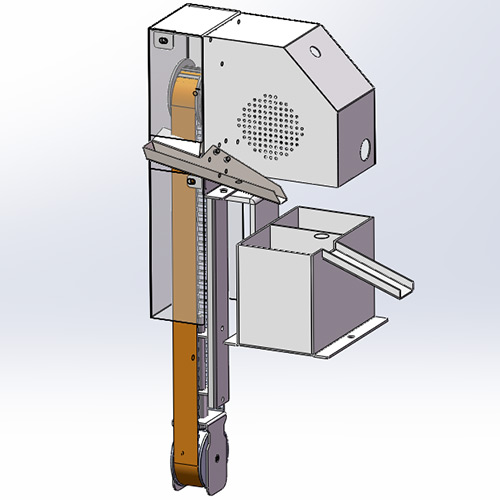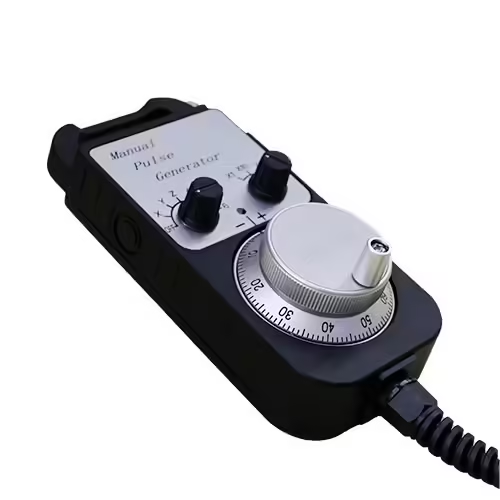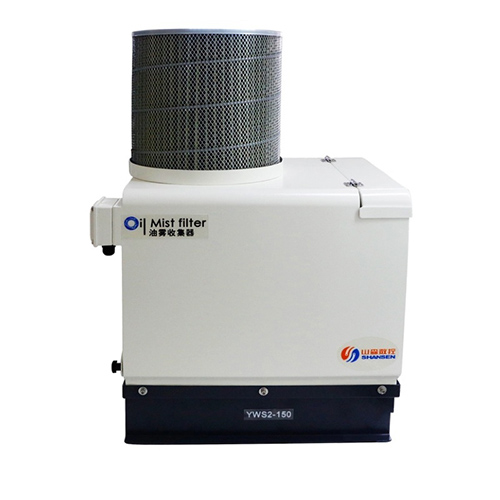-
WhatsAPP: +86 18706448138
-
Tengzhou, Shandong, China

Manual Pulse Generator: Your Ultimate Buyer’s Guide
This guide will walk you through everything you need to know about manual pulse generators, from their functionality to key considerations when purchasing one.
Table of Contents
Introduction

In the world of CNC machining, precision and control are paramount. A manual pulse generator (MPG), often referred to as a handwheel or jog wheel, is a critical tool that allows operators to manually control the movement of CNC machines with high accuracy. Whether you’re fine-tuning a workpiece or setting up a complex machining process, the manual pulse generator ensures smooth, precise adjustments. As a leading developer and manufacturer of electrical components for CNC machines, Shansen is committed to delivering high-quality manual pulse generators that enhance operational efficiency. This guide will walk you through everything you need to know about manual pulse generators, from their functionality to key considerations when purchasing one.
What Is a Handheld Pulse Generator?
A manual pulse generator is a handheld or panel-mounted device used to send precise electrical pulses to a CNC machine’s control system. These pulses translate into incremental movements of the machine’s axes, allowing operators to jog or position the tool or workpiece with exceptional accuracy. Typically, a handheld pulse generator features a rotary knob, selector switches for axis selection, and multiplier settings to adjust the scale of movement. Shansen’s handheld pulse generators are designed to integrate seamlessly with various CNC systems, offering durability and ergonomic design for industrial environments.
How Does a Handheld Pulse Generator Work?
The core function of a handheld pulse generator lies in its ability to generate electrical pulses proportional to the rotation of its handwheel. Each pulse corresponds to a specific increment of movement, often as small as a micron, depending on the machine’s resolution and the MPG’s multiplier settings. For example, turning the handwheel one click might move the machine’s X-axis by 0.001 mm. This level of control is essential for tasks like tool positioning, zero-point setting, or manual machining. Shansen’s manual pulse generators are engineered to deliver consistent pulse output, ensuring reliable performance across diverse CNC applications.
Why Choose a Manual Pulse Generator for CNC Machining?


Manual pulse generators are indispensable in CNC machining for several reasons. They provide operators with tactile, hands-on control, which is often more intuitive than software-based jogging. This is particularly useful during setup, testing, or troubleshooting phases. Additionally, handheld pulse generators enhance safety by allowing operators to make precise adjustments without relying solely on automated systems. At Shansen, our handheld pulse generators are built to withstand the rigors of industrial use, offering robust construction and compatibility with a wide range of CNC controllers.
Applications of Handheld Pulse Generators
Handheld pulse generators are used in various CNC applications, including milling, turning, grinding, and EDM (electrical discharge machining). They are particularly valuable in scenarios requiring fine adjustments, such as:
- Tool and workpiece alignment: Ensuring precise positioning before machining begins.
- Manual jogging: Moving machine axes during setup or maintenance.
- Teach mode programming: Recording manual movements for CNC program creation.
- Emergency adjustments: Making quick, controlled movements to avoid collisions or errors.
Shansen’s handheld pulse generators are designed to support these applications, offering versatility and reliability for professional machinists.
Key Features to Look for in a Manual Pulse Generator
When selecting a handheld pulse generator, several features can impact its performance and usability. Here are the most important factors to consider:
Pulse Resolution and Accuracy
The resolution of a handheld pulse generator determines the smallest increment of movement it can control. High-resolution MPGs are essential for applications requiring ultra-precise adjustments. Shansen’s handheld pulse generators offer customizable pulse resolutions to suit different machining needs, ensuring accuracy in every operation.
Ergonomic Design
A well-designed manual pulse generator should be comfortable to use for extended periods. Look for models with intuitive controls, a smooth-turning handwheel, and a compact form factor. Shansen prioritizes ergonomics in its MPG designs, making them ideal for prolonged use in demanding environments.
Durability and Build Quality
Industrial environments can be harsh, so a handheld pulse generator must be built to last. Opt for models with rugged housing, sealed buttons, and resistance to dust, oil, and vibration. Shansen’s handheld pulse generators are constructed with high-quality materials to ensure long-term reliability.
Compatibility with CNC Systems
Not all handheld pulse generators are compatible with every CNC controller. Check for compatibility with your machine’s control system, such as Fanuc, Siemens, or Mitsubishi. Shansen’s MPGs are designed to integrate seamlessly with a wide range of CNC platforms, offering plug-and-play functionality.
Multiplier and Axis Selection
A good manual pulse generator should allow operators to select different axes (X, Y, Z, etc.) and adjust the movement scale using multiplier settings (e.g., x1, x10, x100). This flexibility enhances efficiency during setup and operation. Shansen’s MPGs include versatile multiplier options for precise control.
Manual Pulse Generator Specifications Table
To help you understand the typical specifications of a handheld pulse generator, the table below outlines key parameters to consider when evaluating options. This table is not a brand comparison but a general guide to MPG specifications.
| Feature | Description | Typical Range |
|---|---|---|
| Pulse Resolution | The smallest movement increment per pulse | 0.001 mm to 0.1 mm |
| Number of Axes Supported | Number of machine axes the MPG can control | 2 to 6 axes |
| Multiplier Settings | Scale of movement per handwheel click | x1, x10, x100, x1000 |
| Operating Voltage | Voltage required for MPG operation | 5V DC to 24V DC |
| Cable Length | Length of the connection cable | 3 m to 10 m |
| IP Rating | Protection against dust and moisture | IP54 to IP67 |
| Handwheel Diameter | Size of the rotary knob | 60 mm to 100 mm |
| Weight | Total weight of the MPG unit | 0.5 kg to 1.5 kg |
This table provides a starting point for evaluating manual pulse generators based on your specific CNC requirements. Shansen’s MPGs are designed to meet or exceed these specifications, ensuring optimal performance in professional settings.
How to Choose the Right Manual Pulse Generator for Your Needs
Selecting the right manual pulse generator depends on your CNC machine, application, and operational preferences. Here are some steps to guide your decision:
- Assess Your CNC System: Confirm the controller type and ensure the MPG is compatible. Shansen offers a range of handheld pulse generators tailored to popular CNC systems.
- Determine Resolution Needs: For high-precision tasks, choose an MPG with fine pulse resolution. Shansen’s MPGs support customizable resolutions for various applications.
- Consider Environmental Factors: If your workshop is exposed to dust or liquids, opt for an MPG with a high IP rating. Shansen’s models are built for rugged environments.
- Evaluate Ergonomics: Test the handwheel’s feel and button layout to ensure comfort during extended use. Shansen’s ergonomic designs prioritize user experience.
- Check Additional Features: Look for features like emergency stop buttons or LED indicators for enhanced functionality. Shansen’s MPGs include optional features for added convenience.
By aligning your choice with these factors, you can find a handheld pulse generator that enhances your CNC operations.
Installation and Setup of a Manual Pulse Generator
Proper installation and setup are crucial for ensuring a manual pulse generator performs reliably. Most MPGs are designed for plug-and-play integration, but following these steps can optimize their performance:
- Connect the MPG: Attach the MPG’s cable to the CNC controller’s designated port. Ensure the connection is secure to avoid signal interruptions.
- Configure Settings: Set the axis selection and multiplier switches according to your machining task. Shansen’s MPGs include clear labeling for easy configuration.
- Test Functionality: Rotate the handwheel to verify that the machine responds accurately. Check for smooth movement and consistent pulse output.
- Calibrate if Necessary: Some CNC systems may require calibration to align the MPG’s pulses with the machine’s movement increments.
- Secure the Unit: If using a handheld MPG, ensure the cable is routed safely to prevent tripping or damage. For panel-mounted models, confirm the unit is firmly attached.
Shansen provides detailed installation guides with its handheld pulse generators, ensuring a hassle-free setup process for users of all experience levels.
Maintenance Tips for Manual Pulse Generators
To maximize the lifespan of your manual pulse generator, regular maintenance is essential. Here are some practical tips:
- Clean Regularly: Wipe down the handwheel and buttons to remove dust, oil, or debris. Use a mild cleaner to avoid damaging the unit.
- Inspect Cables: Check the connection cable for signs of wear or fraying. Replace damaged cables promptly to maintain signal integrity.
- Test Performance: Periodically test the MPG’s pulse output to ensure consistent accuracy. Shansen’s MPGs are designed for easy diagnostics.
- Store Properly: When not in use, store handheld MPGs in a dry, dust-free environment to prevent damage.
- Avoid Overloading: Do not apply excessive force to the handwheel, as this can damage internal components.
By following these maintenance practices, you can ensure your manual pulse generator remains in top condition for years. Shansen’s MPGs are engineered for low maintenance, with robust components that withstand heavy use.
Common Challenges and Solutions with Manual Pulse Generators

While manual pulse generators are reliable tools, operators may encounter occasional challenges. Here are some common issues and their solutions:
- Inconsistent Movement: If the machine’s movement is erratic, check for loose connections or a faulty cable. Shansen’s MPGs feature secure connectors to minimize this issue.
- No Response: Ensure the MPG is compatible with your CNC controller and that the correct axis is selected. Shansen provides compatibility guides to assist with troubleshooting.
- Handwheel Stiffness: A stiff handwheel may indicate internal wear or debris. Clean the unit and contact the manufacturer if the issue persists.
- Pulse Errors: If pulses are skipped, verify the multiplier settings and test the MPG on another machine to isolate the issue.
Shansen’s technical support team is available to assist with any challenges, ensuring your manual pulse generator operates flawlessly.
Conclusion
A manual pulse generator is an essential tool for achieving precision and control in CNC machining. By understanding its features, applications, and selection criteria, you can choose an MPG that enhances your workflow and delivers consistent results. Shansen’s manual pulse generators are designed to meet the needs of modern machinists, offering durability, compatibility, and ergonomic design. Ready to elevate your CNC operations? Contact us at Shansen to explore our range of high-quality manual pulse generators and find the perfect solution for your needs.
FAQ
What is the difference between a manual pulse generator and a CNC pendant?
A manual pulse generator is a component of a CNC pendant, specifically the handwheel used for manual axis control. A CNC pendant may include additional controls, such as jog buttons or an emergency stop. Shansen’s manual pulse generators can be integrated into pendants or used as standalone units.
Can a manual pulse generator be used with any CNC machine?
Most manual pulse generators are compatible with standard CNC controllers, but you should verify compatibility with your specific system. Shansen’s MPGs support a wide range of controllers, including Fanuc, Siemens, and Mitsubishi.
How do I know if my manual pulse generator needs replacement?
Signs of wear, such as inconsistent pulses, stiff handwheel movement, or physical damage, may indicate the need for replacement. Regular maintenance can extend the life of your MPG, but Shansen offers durable replacements when needed.



